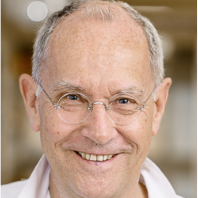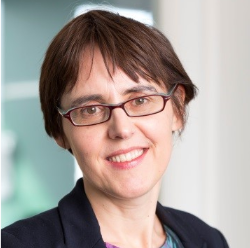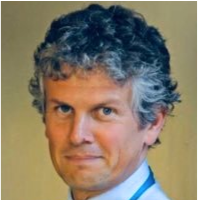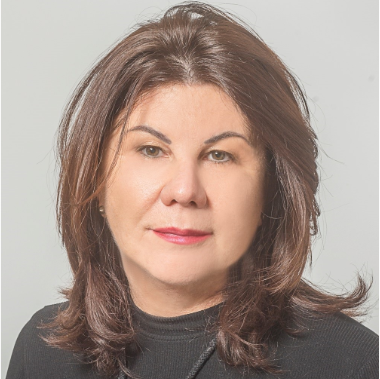The session highlights key issues affecting stroke survivors in the longer term and shares examples of good practice and what ‘good’ long term support looks like in a post-pandemic context.

Bo Norving
Bo Norving – is Professor in Neurology at Lund University, Sweden. He has published over 500 papers on stroke and several books. He was corresponding author of the Swedish Aspirin Low-Dose Trial (SALT) published in The Lancet 1991 as the first trial to demonstrate the benefit of low dose aspirin therapy for the prevention of stroke.
Bo is a founder of the Swedish Stroke Register (Riksstroke), the world’s first national stroke registry. Since 2014 he chairs the Riksstroke, and is actively engaged in many international register collaborations. He is the first Editor-in-Chief for the European Stroke Journal.
His presentation on challenges in supporting Life after stroke: experiences from Sweden can be viewed at 12:52 in the video.
Bo Norving Q&A:
How is the Swedish Stroke Register financed and how far are the services for stroke survivors covered by insurance
The (small) secretariat of the Swedish Stroke Register is governmentally supported and part of the country’s social medicine principle. For the registration at the hospitals, each unit covers its own cost as part of the healthcare system.
Do you think that the post-stroke checklist can be used as performance indicators for European healthcare systems in addition to the key performance indicators already defined in the Stroke Action Plan?
The post-stroke checklist is only a tool and what counts is which actions the post-stroke checklist leads to in the next step. Just ticking off the items in the post-stroke checklist is not enough
Did you find differences in after-stroke care for persons with hemorrhagic strokes as compared to ischemic strokes?
This has not been analysed in detail so far, but at this stage, we have not found any differences
Any reason for three-month follow up reviews as opposed to six-month as we do in the UK? Many stroke patients may still be receiving therapy six to eight weeks post hospital discharge.
In Sweden we recommend three to six months for the follow up, recognising that a structured systematic follow up is not yet in place and that it is difficult to be very strict on the exact timing. Still receiving therapy eg speech therapy or physiotherapy would not hinder a systematic follow-up visit in my view, since there are so many domains to follow up.

Juliet Bouverie
Juliet Bouverie – is the Chief Executive of the Stroke Association, the UK’s leading stroke charity promoting life after stroke. The organisation’s activities extend from funding stroke research, to providing services to stroke survivors and their families, influencing and campaigning for change, and educating and working to prevent strokes. There are 1.2 million stroke survivors in the UK, yet stroke still remains the fourth single largest cause of death in the UK and second in the world.
Juliet co-chairs the Stroke Delivery Programme Board with NHS England and is a member of the NHS Assembly.
Her talk on how COVID-19 has impacted people affected by stroke in the UK and what that means for stroke policy and support services can be viewed at 31:19 in the video.
Juliet Bouverie Q&A:
The overriding sense of abandonment after stroke was predominant before the pandemic. It must be overwhelming now and we have a huge amount of work to do to rectify it
Yes. The Stroke Association’s Stroke Recoveries at Risk report stroke.org.uk/sites/default/files/campaigning/jn_2021-121.1_-_covid_report_final.pdf, published September 2020, shows that 7 in 10 stroke survivors report feeling more anxious or depressed recently, 45% of all stroke survivors now feel less able to cope with the impacts of their stroke, and over a third (37%) report feeling abandoned. We know that access to rehabilitation and support – already very patchy across the UK – was hampered by the pandemic.
For example, our SRAR report shows that 57% of stroke survivors had appointments related to their stroke cancelled or postponed, and 55% had therapy cancelled or postponed. 39% of stroke survivors who had their stroke last year said they had not received enough rehabilitation therapies. We are committed to understanding the longer-term impact of the pandemic on stroke survivors as Covid-19 cases fall, and the backlog of rehabilitation and support needs there may be as a result.
The Stroke Association has also committed to maintaining its two new Covid services into the long term: Stroke Connect – a phone support and signposting service for those newly discharged from hospital stroke.org.uk/professionals/stroke-association-connect, and Here for You – a volunteer phone support service to help reduce isolation and feelings of abandonment – stroke.org.uk/finding-support/here-for-you
Perhaps it is not the digital medium that is the issue - more about how it is utilised by a skilled therapist?
I agree that there is a skill in handling conversations and therapy provision remotely. You need both the service user to be confident with the digital medium so that the technology is not creating a barrier, and then you need a skilled therapist who is able to adapt their approach to the digital medium as well. So, it will be a case going forward of ensuring that both are enabled/upskilled – the service user to access the technology and the therapist to adapt provision to the technology.
Is there data on people from other ethnic communities and what their experiences are? What are the barriers and challenges to access the services? How do we address these issues?
Although there have been government and academic-led reports on the experiences of ethnic communities related specifically to Covid-19, unfortunately there is limited information regarding the experience of BAME communities in accessing stroke services during this time.
Our Stroke Recoveries at Risk report did include responses from people from BAME communities, however the number of responses was not significant enough to draw any specific conclusion. This lack of data is something we are acutely aware of at the Stroke Association and over the next six to 12 months we will be developing our strategy related to tackling health inequalities across the whole stroke pathway. An important part of this will be co-creating our strategy with people from these communities to understand the barriers and challenges they face, so that we can start addressing these and influencing for action.
Will stroke care in the future include telehealth as hybrid services? Do you think we have enough skilled workforce across Europe to do this?
We need to carefully evaluate all the innovations adopted during the coronavirus pandemic. However, I think it is likely that therapy provision will become a hybrid model in future, with face-to-face provision at the beginning, then ongoing remote rehabilitation for those who prefer or can benefit from this channel. However, we must not under-estimate the power of face-to-face therapy provision, particularly for those with aphasia and cognitive impairment who currently experience digital exclusion.

Liam Healy
Liam Healy – is a Consultant Stroke Physician and Geriatrician and Clinical Lead for Stroke in Cork University Hospital, Ireland. Cork University Hospital is the busiest inpatient stroke service in the country and one of two thrombectomy centres nationally.
Liam trained in Ireland as a Geriatrician and spent a number of years training in Edinburgh in Acute Medicine and Stroke before returning to Cork in 2015. He is a member of the Irish Clinical Advisory Group on Stroke and a Clinical Lecturer in University College Cork.
His talk on life after stroke: experiences in providing care in Ireland during COVID-19 can be viewed at 1:13:00 in the video.

Caterina Pistarini
General Q&A:
If we prioritise mood disorder, might this have a subsequent positive impact on all the other outcomes/issues?
CP: Yes, in particular for patients with severe disability that requires a good collaboration from person
JB: There is evidence to suggest that support with dealing with the psychological impact of stroke helps with adherence to medications and subsequent therapies.
BN: Scientifically this is still an open question. It is a difficult topic to study as so many factors influence depression and recovery.
Do we understand why stroke is so neglected? If we did - it might help change the situation
CP: I’m not sure that stroke is so neglected in particular within the neuro rehabilitation field where the majority of patients is addressed on treatments of consequences of stroke disease.
JB: These are personal opinions from myself but I believe that stroke has been neglected for a number of reasons. It’s a relatively young medical sub-speciality with its own evidence base only starting around 30 years ago. It falls between ‘cardiovascular’ and ‘neurological’ conditions in terms of its classification and is not always mentioned as a condition in its own right. Stroke survivors do not have the voice that, for example, cancer survivors have because of the impact of the illness on people’s health wellbeing and their difficulty in speaking up and sharing their stories.
Previous market research work by the Stroke Association in the UK around the perception of stroke amongst the general population would suggest that for many people, stroke is poorly understood – it is not seen to be as ‘scary’ as cancer or heart attack and therefore doesn’t attract the same awareness and concern that these conditions do. Stroke is also very much perceived as only happening to very old people which again reduces the level of concern around the condition. And because the general public see it in this way and are less concerned/interested in it, this in turn means that it gets less coverage in the media and is generally less ‘acknowledged’ than other conditions. In turn potentially resulting in less financial support for stroke from donors. And thus less research as there is less funding available. Our new brand campaign was designed to address this lack of understanding/concern and we are making progress in changing public perception of stroke, but changing perceptions is a slow process which requires consistent and sustained messaging over a long period of time.
BN: The traditional reason is definitively that no specific acute therapy was available until a few decades ago. But even if that has changed, and we now have very effective acute therapies, there has been too little attention on life after stroke, and what it means for patients and carers in all different aspects. I think a common misconception is that there is little that can be done after the acute phase.
Do the speakers agree that reviews of stroke survivors should be done every year, as survivors' issues can change over the years, and new preventions and interventions may be required?
CP: YES
JB: Structured follow-up should happen at least once a year. The UK’s national stroke clinical guideline recommends that follow-up reviews should take place at six weeks, six months, 12 months, then annually thereafter
BN: This would be very reasonable for many good reasons. But I think there is a long way to get here: today almost all countries do not have even a routine systematic follow up after three to six months in place.
Is there any issue on in the diffusion of technological support for telemedicine in your country? In Italy there is a problem of access to these technologies especially in the elderly.
CP: Telemedicine needs the support of technologies and this is a main issue in low- and middle-income countries. This is the first problem. Then there are also economic issues. The health systems should support the costs. In Italy, in particular after the need of finding new possibilities, alternative to in-hospital treatment, the specialists in rehab are working to provide on this matter.
JB: We don’t have any definitive data on this, however we do know both anecdotally and from various pieces of market research that those in older age groups tend to be less techno-savvy and capable and this can be a barrier to accessing the internet/telemedicine. That said, we are also seeing that this is an area where the coronavirus pandemic has had a positive impact – the pandemic has upskilled many people, especially older generations – many of them will now do more online because they have been ‘forced’ to do so during the pandemic (“Positive Tech” has been identified as a key consumer trend influenced by Covid-19). Specific to stroke, we also know that people with communication difficulties find it particularly difficult to access these technologies
There’s plenty of work being done to retrospectively and quickly understand how digital health can support and improve the stroke pathway, and wider health services. For example, we recently contributed to this Patient’s Association report ‘Digital health during the pandemic: Learning lessons to maintain momentum’, which explores digital health used during the pandemic. Whilst the pandemic has accelerated use of technologies across the pathway, it’s vital that any changes during the pandemic are fully evaluated. Healthwatch have also produced a useful report to explore the rapid use of virtual consultations. Our Stroke Recoveries at Risk report stroke.org.uk/sites/default/files/campaigning/jn_2021-121.1_-_covid_report_final.pdf (p.36-39) shows that, whilst virtual healthcare has been well received by the majority (61%) of stroke survivors who used it during the pandemic, it is still not appropriate for everyone, and some of the barriers are explored in this report. We believe stroke services should evaluate and incorporate virtual models of stroke rehabilitation and support alongside face-to-face, offering people affected by stroke enhanced choice when accessing support. They should also engage with patients to make sure that no groups, including those with communication difficulties or those less digitally literate, are disadvantaged.
BN: Telemedicine has many advantages, but it is still unclear how good it is and to what extent it could replace visits in person after stroke. Telemedicine is attractive in many aspects, but before we rush into it, I would favour that the technique is properly evaluated.